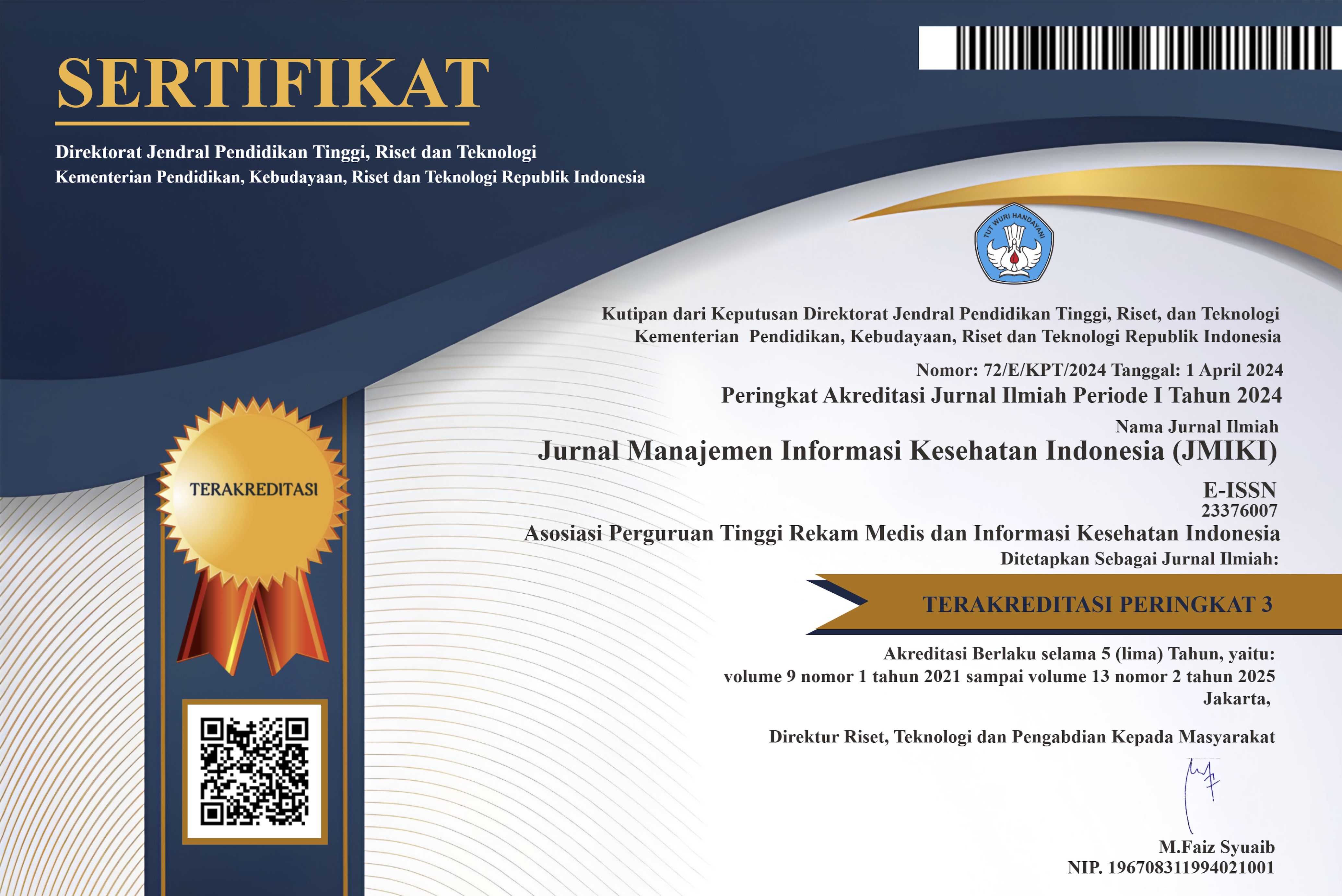KEAKURATAN KODE DIAGNOSIS DENGAN ICD-10 DI PUSKESMAS PENGASIH I DAN PENGASIH II
DOI:
https://doi.org/10.33560/jmiki.v6i2.195Keywords:
EMR, accurateness, Information System, Code diagnosis, Primary Health CentresAbstract
Background: The implementation of Electronic Medical Record (EMR) in Puskesmas Kulon Progo as a tool to communicate and coordinate between health practitioner related with patient’s status. On the other hand, it as a monitoring and evaluating morbidity surveillance. The accurateness of Code Diagnosis by using ICD-10 can improve the quality of it
Objective: to evaluate the accurateness of code diagnosis to improve the quality of EMR data.
Methode: descriptive study with a qualitative approach by using secondary data from EMR system with using cross sectional desaign. The object that is used of 234 code diagonosis from Pengasih I and Pengasih II health centres, the participants as an interviewee which is they divided from nurse, a midewife as the officer who filled directly into the EMR diagnosis code in SIMPUS. Data collection techniques used were interview, observation and study document by using EMR data from SIMPUS
Result: 234 code diagnosis from EMR data between Pengasih I and Pengasih II are analysed based on ICD-10, there are code diagnosis from EMR in Pengasih I accurateness 30 (26%), not accurateness 87 (74%). In Pengasih II accurateness 35 (30%) and not accuratness 82 (70%). The factors that lead to coding diagnosis inaccuracies are element man, method and machine
Conclusion: The results suggest that although they already used the EMR, the quality of the data especially related to the coding diagnosis still low



